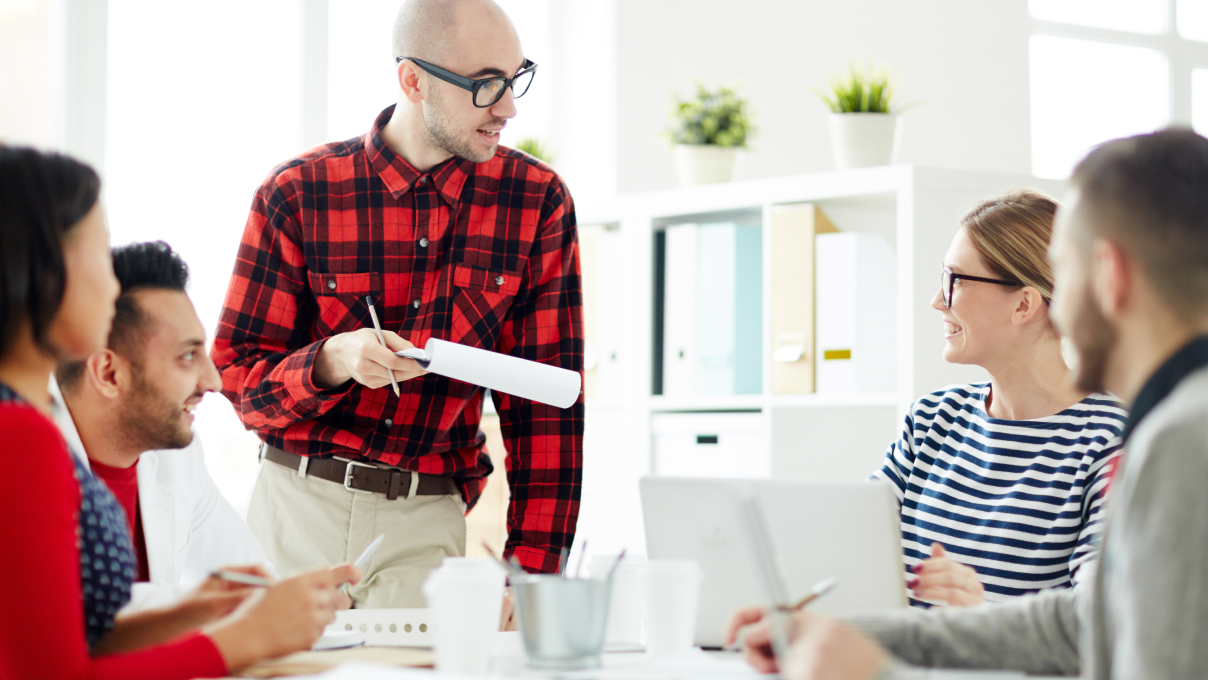Today’s paradigm-shifting business landscape necessitates significantly restructuring how organizations operate and, consequently, how their employees work. Driven by technological advancements and automation, job roles will likely undergo substantial changes, necessitating a greater emphasis on upskilling and reskilling the workforce.
Recognizing this, many managers now view learning and development as not a fringe benefit but a central pillar of their business strategy. What key L&D trends should businesses incorporate in 2024 to stay ahead of the curve?
The Future of Learning and Development: 7 trends to look out for
Why should organizations become more proactive in the L&D sphere? LinkedIn’s Workplace Learning Report 2023 revealed that skill sets required in modern companies have changed by approximately 25% since 2015, and this trend is expected to reach 50% in the next three years. Consequently, employers find it challenging to fill the new roles, which underscores the importance of reskilling and onboarding activities.
We present seven emerging Learning and Development practices to consider in 2024 and beyond.
1. Reskilling and upskilling
In 2024, upskilling and reskilling will become leading trends in shaping the future of learning and development. Driven by the need to adapt to the rapidly changing job market, these practices can be treated as strategic investments in a company’s most valuable asset, human capital.
Reskilling equips employees with new qualifications to fill emerging roles within the organization, especially those driven by technological advancements and higher process automation. Upskilling equips employees with advanced skills and broader knowledge for their current roles. This enables them to handle greater responsibilities and fill the skill gap.
Upskilling and reskilling existing employees is usually more cost-effective than hiring new talents with specific skill sets. They can also be powerful tools for boosting employee morale, engagement, and loyalty.
Innovative practices in upskilling and reskilling involve:
- Microlearning (described in detail in the next section)
- Personalized learning paths that can be incorporated with a modern LMS
- 360-degree feedback from trainers, colleagues, and clients
- Digital libraries of business knowledge granting access to all learning materials
- E-learning incorporating various formats
- Collaborative and social learning.
2. Microlearning
The future of learning and development includes microlearning, which focuses on delivering bite-sized pieces of information or skill development in short, focused bursts. Microlearning formats include short videos, quizzes, drag-and-drop activities, 10-15-minute podcasts, and cheat sheets.
Microlearning appears to be highly effective because it:
- Caters to shorter attention spans, typical in today’s fast-paced world
- Can be easily integrated into busy work schedules
- Is relevant to immediate needs; focuses on specific skills
- Offers varied formats, making learning more engaging than traditional methods
- Does not result in information overload
- Can be accessed anytime, anywhere through online platforms
- Offers instant gratification by focusing on one objective per module.
3. Hybrid learning
Hybrid learning combines elements of traditional in-person classroom instruction with online learning activities. This creates a blended learning experience that combines the benefits of both methods.
Hybrid learning programs involve a mix of face-to-face sessions with instructors and e-learning modules, activities, or resources. The balance between these components can vary depending on the specific program and learning objectives.
Hybrid learning offers greater flexibility for both learners and instructors. Employees can participate in online components at their own pace and convenience, while in-person sessions can be used for interactive discussions, hands-on activities, and building relationships.
4. Adaptive learning

The landscape of corporate learning and development is undergoing a significant shift. This shift emphasizes providing personalized learning opportunities that cater to individual learners’ unique needs and preferences. It aligns perfectly with the evolving expectations of today’s workforce, who increasingly seek customized learning experiences that empower them to grow in their careers.
According to the Adaptive Learning Software Market [2024-2031] study, the adaptive learning software market size is projected to reach multi-million USD by 2029 compared to 2022, with an unexpected CAGR from 2022 to 2029 (source).
The key features of adaptive learning:
- Diagnostic assessments to gauge a learner’s current knowledge level and identify areas of strength and weakness
- Personalized learning paths with different resources, activities, and difficulty levels for each student
- Real-time adjustments to adapt to learner progress.
Adaptive learning leads to improved learning outcomes, increased engagement, and a more efficient use of learning resources. However, it’s important to remember that adaptive learning is still evolving. These platforms’ effectiveness depends on the quality of the algorithms and the available learning content.
5. VR and AR training

Augmented reality (AR) and Virtual Reality (VR), key learning and development trends in 2024, are reshaping professional learning with interactive and immersive experiences. These technologies create controlled environments that mirror real-life scenarios, enabling professionals to gain practical skills while minimizing real-world risks. This approach effectively bridges the gap between theory and practice.
VR and AR training are a part of a wider, experiential learning approach that provides hands-on experiences that promote active participation, problem-solving, and reflection. The widespread adoption of AR, VR, or XR (Extended Reality) programs, across various industries signifies a general shift towards more engaging and practical learning methods.
6. Gamification
Gamification is showing promising prospects in learning and development. A survey from the School of Electrical and Computer Engineering at the National Technical University of Athens, Greece, involving 365 students, revealed that challenge-based gamification could boost student performance by 89.45% compared to traditional lecture-based methods (source).
Additionally, the Online Travel Training (OTT) platform observed a 65% rise in user engagement and a 300% increase in online activity among some users after integrating gamification (source). Furthermore, a Federation of American Scientists study found that students retain 20% of what they hear, which increases to 30% with the addition of visual aids (source).
These findings highlight the increasing role of gamification in education, making it one of the most important trends in learning and development. Educators and trainers can make learning more engaging and interactive by integrating game elements like challenges, quests, and role playing. Participants are awarded with points, badges and can see how far they’ve progressed through a course or module thanks to progression bars and leaderboards.
7. Automated graded assessments
Automated graded assessments, also known as online assessments or computer-assisted assessments, are tools used in learning and development to evaluate learner knowledge and skills. They often utilize Artificial Intelligence to transform the evaluation process, particularly natural language processing and pattern recognition. They’re expected to gain wider adoption due to their efficiency, consistency, speed, and scalability, significantly improving traditional, bias-prone manual grading methods.
These automated systems are particularly efficient in large-scale educational settings, reducing grading time and allowing educators to focus more on curriculum development and engaging with learners. The speed of these AI-powered assessments provides rapid feedback, which is essential in the fast-paced learning trends 2024, offering quick performance insights and helping institutions streamline processes. Moreover, their scalability makes them suitable for various educational and professional development scenarios and adaptable to changing learning needs.

The Future Of Learning And Development: Key Takeaways
The business world is changing rapidly, driven by technology and automation. It requires companies to adapt their workforces through upskilling and reskilling initiatives. Learning and Development (L&D) is no longer a perk but a central pillar of a successful business strategy.
The key Learning and Development trends to watch for in 2024 are:
- Upskilling and Reskilling: Equipping employees with new skills to adapt to job market changes and fill emerging roles.
- Microlearning: Delivering bite-sized, focused learning modules that are easily integrated into busy schedules.
- Hybrid Learning: Combining traditional classroom instruction with online learning activities for a flexible and engaging experience.
- Adaptive Learning: Personalizing learning paths based on individual needs and progress.
- VR and AR Training: Creating immersive simulations for practical skill development in a safe environment.
- Gamification: Using game mechanics like points, badges, and challenges to make learning more engaging and interactive.
- Automated Graded Assessments: Utilizing AI to streamline the grading process, providing faster feedback and reducing bias.
Following these trends allows organizations to develop a future-proof workforce with the skills and knowledge needed to thrive in the ever-evolving business landscape. By investing in L&D, companies can empower their employees, improve performance, and gain a competitive edge.











